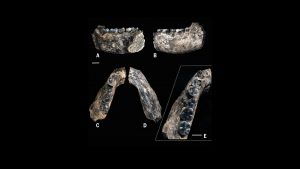
Image credit William H. Kimbel
Our genus, the genus Homo, emerged sometime between 3.0 and 2.5 million years ago. While Homo habilis is the earliest named species in the genus Homo, appearing in the fossil record some 2.3 million years ago, there are fossils older than Homo habilis that are recognized as belonging to the genus Homo. These fossils are few and far between, making the study of earliest members of genus difficult.
One of the best fossil representatives from this poorly understood period of human evolution is a mandible from Ledi Geraru, a field site located in the Afar Region of Ethiopia and dated to approximately 2.8 million years ago. Found and analyzed by an interdisciplinary and inter-institutional team, the mandible provides a tantalizing glimpse of the morphology of one of the earliest representatives of the genus Homo.
While the mandible possesses some more primitive features that are typical of the genus Australopithecus, other features align it more closely with the genus Homo than with the genus Australopithecus. It lacks the wear pattern (the manner in which the teeth gradually, over time, grind away) of Australopithecus afarensis, and other dental features commonly present in Australopithecus are absent.
Researchers from the Ledi Geraru site also analyzed other fauna (animals) from the site and noted that the community of mammals that lived alongside the hominin represented by the mandible was dominated by animals that preferred more open, rather than forested, environments compared to the environments inhabited by Australopithecus afarensis at slightly older localities in the same region. They interpreted this to indicate that global climate change, leading to this shift from slightly more forested to open environments, may have coincided with the emergence of the genus Homo.